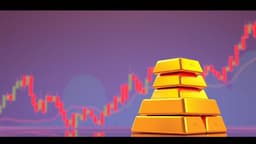Home / Business and Economy / Gold Prices Surge on Dovish Fed Expectations
Gold Prices Surge on Dovish Fed Expectations
11 Nov
Summary
- Gold prices climb nearly 3% to 2-week high
- Weak U.S. economic data boosts expectations of Fed rate cut
- Gold could reach $4,200-$4,300 by year-end, $5,000 in Q1 2026

On November 10, 2025, gold prices climbed nearly 3% to hit a more than two-week high, as weak economic data out of the United States reinforced expectations that the Federal Reserve will cut interest rates. Spot gold rose 2.8% to $4,111.39 per ounce, while U.S. gold futures for December delivery increased 2.8% to $4,122.00 per ounce.
The surge in gold prices was driven by a jobs report last week that showed the U.S. economy shed jobs in October, with losses in the government and retail sectors. Additionally, U.S. consumer sentiment slumped in early November, further fueling expectations of a dovish Fed. Markets now see a 64% chance of a rate cut in December, with the odds climbing to about 77% by January.
Looking ahead, analysts predict gold could range between $4,200 and $4,300 per ounce by the end of 2025, with $5,000 per ounce still a reasonable objective for the first quarter of 2026. The non-yielding asset tends to perform well in a low-interest-rate environment and during times of economic uncertainty.




